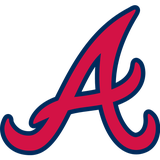
FANTASY PLAYS: Talent scarce among fantasy starting pitchers
There's a scarcity of pitching in today's fantasy game. Top-tier talent is less often returning on the investment of fantasy owners.
An often overlooked, underappreciated statistic in finding fantasy return on investment (ROI) is innings pitched. Since 2014, only four starters have had three consecutive seasons of both 200 innings pitched and 200 strikeouts: Madison Bumgarner, Corey Kluber, David Price and Max Scherzer.
In 2014, 34 pitchers reached 200 innings. That went down to 15 pitchers in 2016. Meanwhile, ERA among starting pitchers has risen from 3.82 in 2014 to 4.34 in 2016.
PORTFOLIO STRATEGY
Consider your starting pitcher rotation as a portfolio. Every successful portfolio is built on a solid foundation, and fantasy rotation construction is no different. The starting pitching market can be summed up in one word - volatile.
Blue chip stocks are the equivalent of elite arms in fantasy baseball. Both come at premium prices that are worth paying. Another essential element is diversification, and correctly allocating your assets with a secure core - while speculating on upside risk - can lead you to a championship.
KNOW YOUR BENCHMARKS
It's important to know your league's benchmark for each pitching category prior to your draft. Go back to last year's final standings and look at the numbers that won the categories (strikeouts, saves, etc.). As you put together your team, add up the projections and try to keep your totals around the top three of those standings.
THREE IMPORTANT ELEMENTS IN EVALUATING STARTING PITCHING
- Strikeouts minus walks divided by IP (or, strikeout percentage minus walk percentage) can yield diamonds in the rough.
- Examine the WHIP Leaderboard and the correlation between WHIP and ERA.
- Identify pitchers who throw first pitch strikes (FpK percent) and produce swings and misses (SwK percent). Both of these stats can be found on FanGraphs.com.
AMERICAN LEAGUE SLEEPER
James Paxton made significant strides last season, buoyed by an uptick in fastball velocity. Other reasons for the Paxton push? His surge in both first pitch strikes and swinging strike percentages, always a winning formula. Also of note, Paxton finished first in fielding independent pitching (FIP) in the American League among starting pitchers with minimum of 120 innings pitched.
AMERICAN LEAGUE DEEP SLEEPER
Jharel Cotton flashed impressive skills in only five games started with Oakland: 66.1 percent first pitch strike percentage (the league average was 60.3 percent) and 12.5 percent swinging strike percentage (league average: 10.1 percent). A small sample size and September success against expanded rosters should be noted, but the numbers are encouraging nonetheless.
NATIONAL LEAGUE SLEEPER
Robbie Ray struck out as many batters as Noah Syndergaard, totaling 218 Ks in 174 1/3 innings last season. Unfortunately, Ray has yet to conquer his command, having finished second in hard hit percentage and leading all qualified starting pitchers with a .352 BABIP in 2016 (league average was .298). Ray did manage to outpitch his peripherals, finishing atop the ERA (4.90) minus FIP (3.76) leaderboard (a way of measuring skill independent of defense) with a 1.14 differential. This Diamondback is currently going off the board after pick 200 and could yield a high dividend if his command corrects.
NATIONAL LEAGUE DEEP SLEEPER
Mike Foltynewicz is an intriguing option in the back end of Atlanta's rotation. The future for Foltynewicz is paved with a striking foundation, armed with a mid-90s fastball and 63.4 percent first pitch strike percentage. Mix in a double-digit swinging strike percentage (above the league average), and you have encouraging skill numbers. Foltynewicz enters spring training as the Braves' fifth starter and has an ADP north of 300.
---
MATT'S TOP 36 STARTING PITCHERS FOR 2017
1.Clayton Kershaw - Los Angeles Dodgers
2.Max Scherzer - Washington Nationals
3.Madison Bumgarner - San Francisco Giants
4.Noah Syndergaard - New York Mets
5.Corey Kluber - Cleveland Indians
6.Chris Sale - Boston Red Sox
7.Yu Darvish - Texas Rangers
8.Johnny Cueto - San Francisco Giants
9.Jon Lester - Chicago Cubs
10.Jake Arrieta - Chicago Cubs
11.Justin Verlander - Detroit Tigers
12.David Price - Boston Red Sox
13.Chris Archer - Tampa Bay Rays
14.Carlos Carrasco - Cleveland Indians
15.Stephen Strasburg - Washington Nationals
16.Kyle Hendricks - Chicago Cubs
17.Jacob deGrom - New York Mets
18.Masahiro Tanaka - New York Yankees
19.Carlos Martinez - St.Louis Cardinals
20.Danny Duffy - Kansas City Royals
21.Zack Greinke - Arizona Diamondbacks
22.Gerrit Cole - Pittsburgh Pirates
23.Dallas Keuchel - Houston Astros
24.Danny Salazar- Cleveland Indians
25.James Paxton - Seattle Mariners
26.Rich Hill - Los Angeles Dodgers
27.Kenta Maeda- Los Angeles Dodgers
28.Julio Teheran - Atlanta Braves
29.Jameson Taillon - Pittsburgh Pirates
30.Aaron Sanchez - Toronto Blue Jays
31.Jose Quintana - Chicago White Sox
32.Cole Hamels - Texas Rangers
33.Rick Porcello - Boston Red Sox
34.Kevin Gausman - Baltimore Orioles
35.Marcus Stroman - Toronto Blue Jays
36.Lance McCullers - Houston Astros
For your consideration, young starting pitchers who missed the cut because of injury, innings cap or others reasons but should be on your radar: Jon Gray, Sean Manaea, Steven Matz, Aaron Nola, Robbie Ray, Carlos Rodon, Julio Urias.
---
This column was provided to The Associated Press by the Fantasy Sports Network, http://FNTSY.com .




